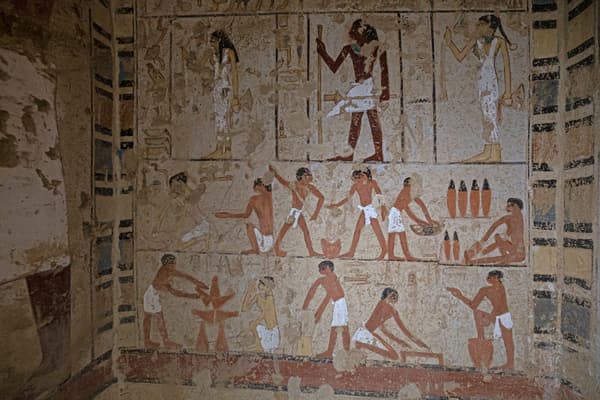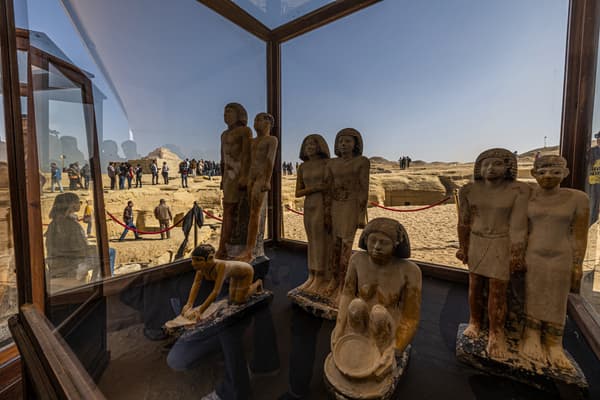Egypt unveiled four tombs of pharaonic dignitaries and a mummy more than 4,000 years old at Saqqara near Cairo on Thursday, the latest in discoveries heralded by a country eager to bring tourists back.
It was in the Saqqara necropolis, known for the famous step pyramid of Pharaoh Djoser, that archaeologists unearthed these sealed tombs under the 5th and 6th Dynasties, between 2500 and 2100 BC.

These deep cavities adorned with colorful scenes of daily life served as the final resting place of Khnumdjedef, the high priest of Pharaoh Unas whose decorated pyramid stands nearby, Meri, the keeper of the king’s secrets, Messi, high priest of Pharaoh Pepi I and for Fetek, notary public and judge, the highly publicized Egyptian archaeologist Zahi Hawass explained to the press.
A mummy covered in gold.
During excavations, 15 meters underground, archaeologists found a limestone sarcophagus “in the same state in which the ancient Egyptians left it 4,300 years ago,” said Zahi Hawass.
When they opened it, they discovered a gold-covered mummy, “one of the oldest and best-preserved in Egypt outside of royal mummies,” the man said, his head covered as always in his famous Indiana Jones hat.

The Saqqara necropolis, just over 15 kilometers south of the famous pyramids on the Giza plateau, is classified as a UNESCO World Heritage Site because Djoser’s pyramid, built around 2700 B.C. C. by the architect Imhotep, it is considered one of the oldest monuments on the surface of the globe.
Several important discoveries in a few months
Egypt has revealed several important discoveries in recent months, mainly in Saqqara but also in Luxor.
Cairo announced on Tuesday the discovery in this southern city, the Thebes of the pharaohs, of the remains of “an entire Roman city” dating from the first centuries after Christ.
For some experts, these announcement effects have a political and economic significance rather than a scientific one. Because the country of 104 million inhabitants in a serious economic crisis counts on tourism to straighten out its finances: its government aims for 30 million tourists a year by 2028, compared to 13 million before Covid-19.
Source: BFM TV

